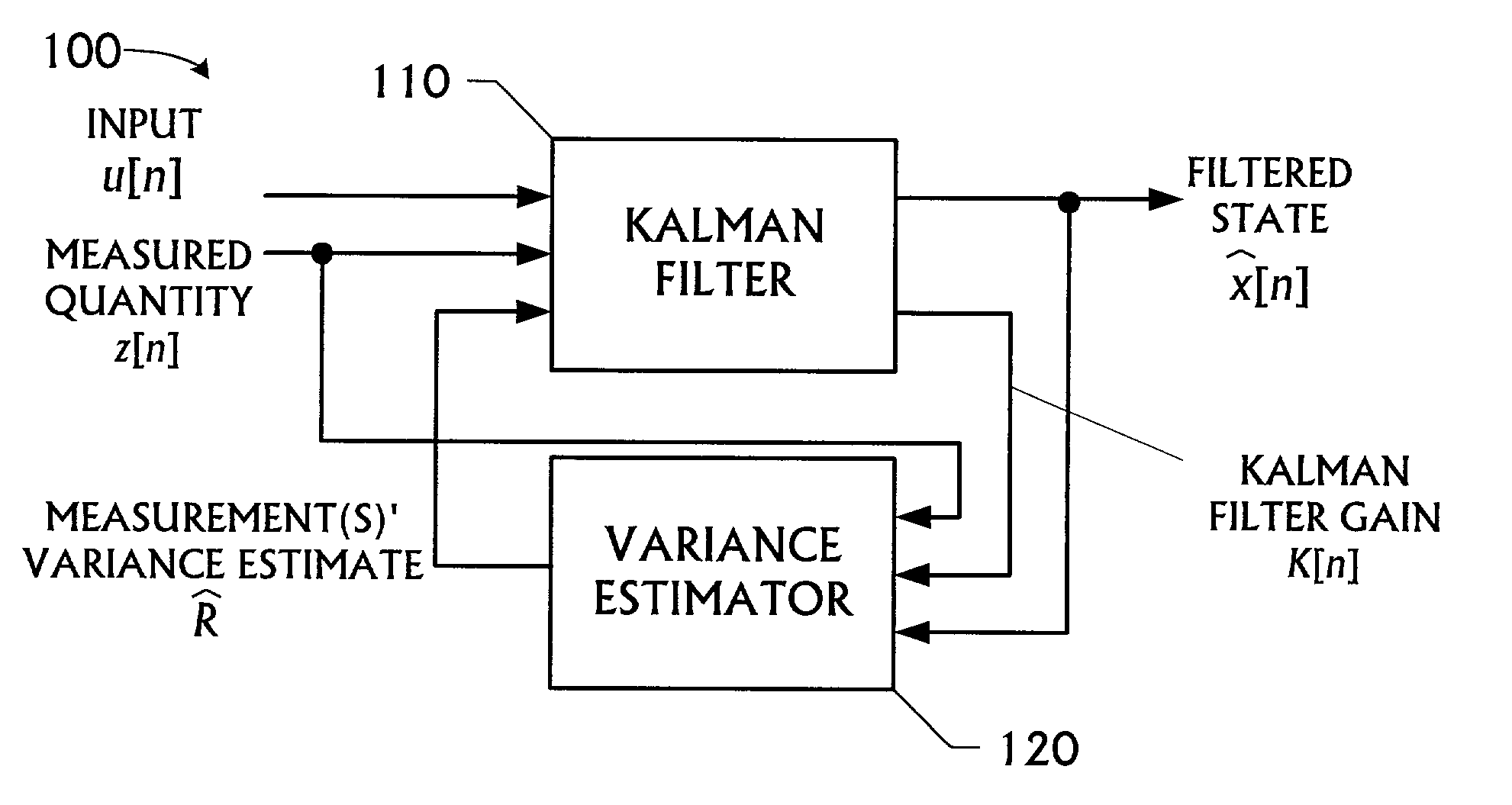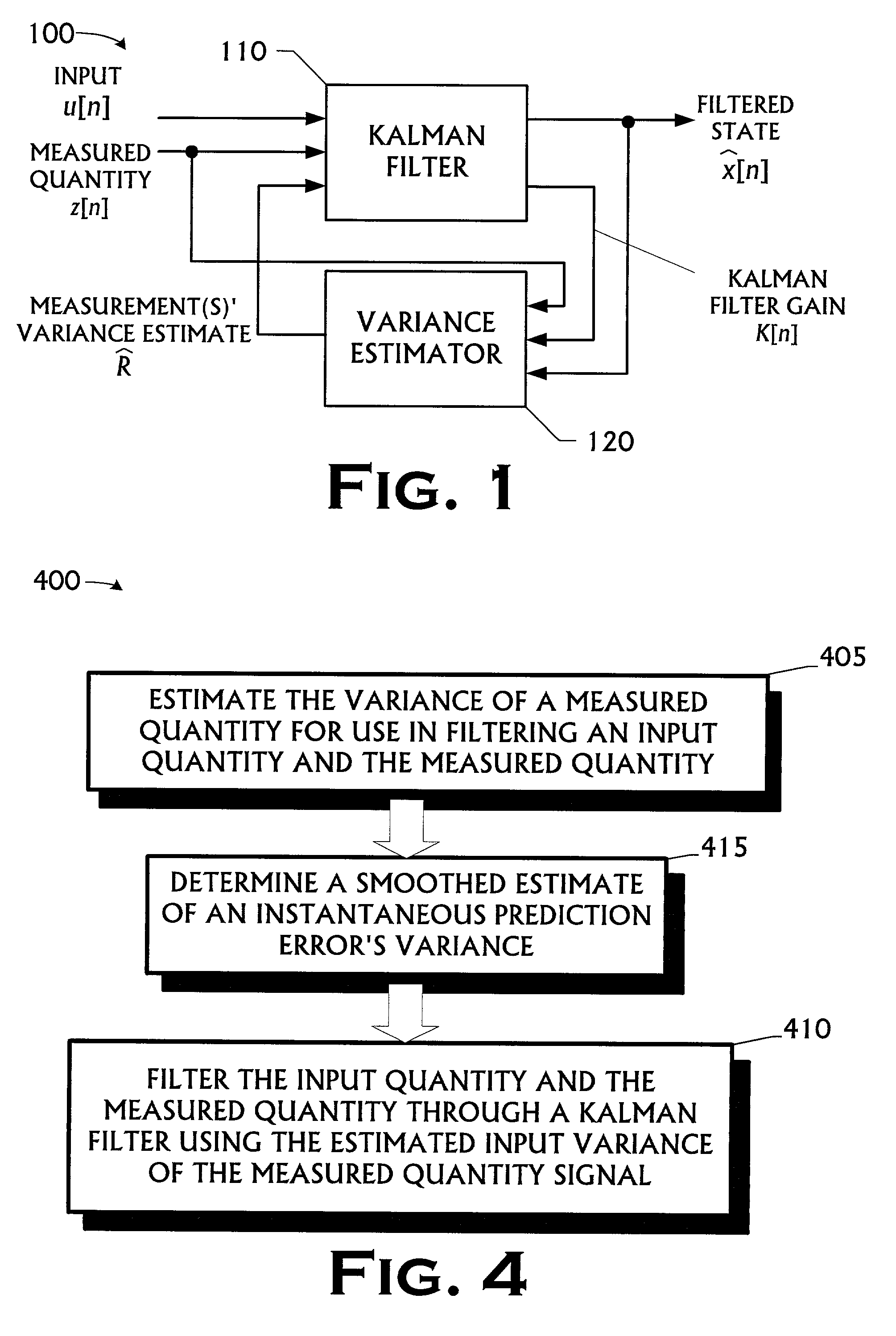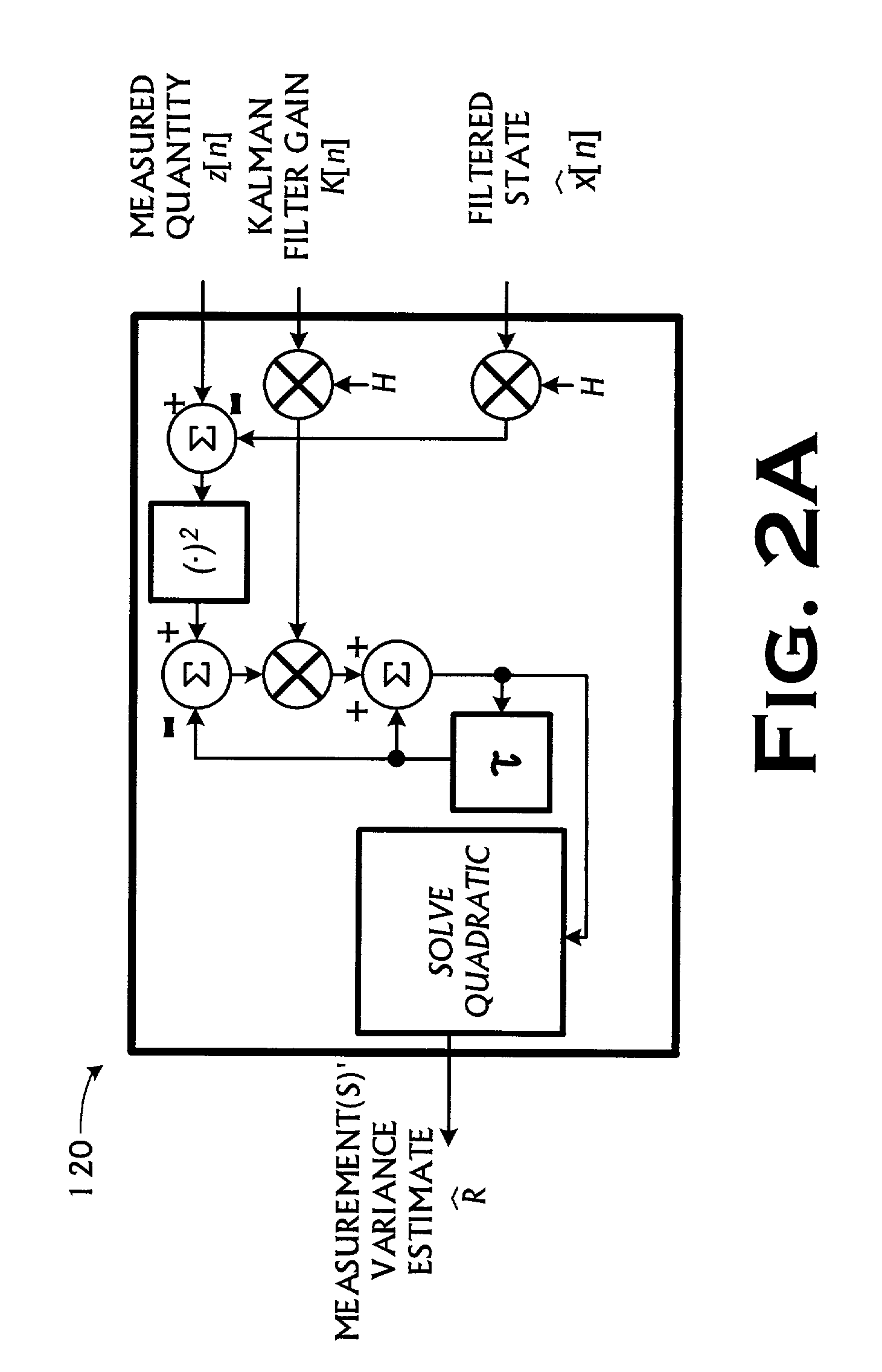Kalman filter with adaptive measurement variance estimator
a kalman filter and variance estimator technology, applied in the field of kalman filter including adaptive measurement variance estimator, can solve the problems of affecting the performance of the kalman filter in its intended function, i.e., smoothing, observation,
- Summary
- Abstract
- Description
- Claims
- Application Information
AI Technical Summary
Problems solved by technology
Method used
Image
Examples
first embodiment
[0047]For a more concrete example of this first embodiment, consider a simple two-dimensional state system where x1[n] is position, x2[n] is velocity, and w[n] is acceleration. The position state x[n] is measured. The matrices of interest are then
[0048]A[n]=[1Δt01](27)B[n]Q[n]B[n]T=σw2[Δt3 / 3Δt2 / 2Δt2 / 2Δt](28)
H[n]=[1 0] (29)
where Δt is the time step and σw2 is the acceleration variance. Consequently, a[n]=1 and q[n]=σw2Δt3 / 3. Note, however, it has been experimentally found that q[n]=σw2Δt provides better results. Eq. (20) then becomes
{circumflex over (R)}[n]2−2{circumflex over (R)}[n][{circumflex over (σ)}e2[n]+q[n]]+{circumflex over (σ)}e2[n](q[n]+{circumflex over (σ)}e2[n])=0 (30)
which is easily solved with the quadratic equation for the positive root
{circumflex over (R)}[n]=(q[n]+{circumflex over (σ)}e2[n])+√{square root over (q[n](q[n]+{circumflex over (σ)}e2[n]))} (31)
This value is then used in the estimation, updates, and determinations discussed above.
[0049...
second embodiment
[0066]For one implementation of this second embodiment, consider the special case of a=1. The required square root is typically an expensive operation. The square root can be eliminated by filtering the absolute error
|e[n]|=|z[n]−H[n]{circumflex over (x)}[n]| (39)
via
{circumflex over (σ)}e[n]={circumflex over (σ)}e[n−1]+H[n]G[n](S[n]|e[n]|−{circumflex over (σ)}e[n−1]) (40)
instead of the squared error. The constant S[n] is a scale factor that accounts for the difference between using the absolute versus the squared error. For Gaussian noise, a typical model, S[n]=√{square root over (π / 2)}≈1.25. Then Eq. (37) becomes
{circumflex over (R)}[n]=({circumflex over (σ)}e[n])2+{circumflex over (σ)}e[n]√{square root over (q[n])} (41)
Typically, the square root of q[n] is a constant independent of n and only need be computed once, or is otherwise inexpensive to compute. This one implementation of the second embodiment follows the FIG. 7, wherein {circumflex over (σ)}e2[n]=0 is changed to |{ci...
PUM
 Login to View More
Login to View More Abstract
Description
Claims
Application Information
 Login to View More
Login to View More - R&D
- Intellectual Property
- Life Sciences
- Materials
- Tech Scout
- Unparalleled Data Quality
- Higher Quality Content
- 60% Fewer Hallucinations
Browse by: Latest US Patents, China's latest patents, Technical Efficacy Thesaurus, Application Domain, Technology Topic, Popular Technical Reports.
© 2025 PatSnap. All rights reserved.Legal|Privacy policy|Modern Slavery Act Transparency Statement|Sitemap|About US| Contact US: help@patsnap.com



